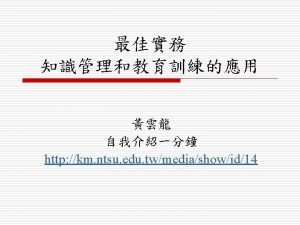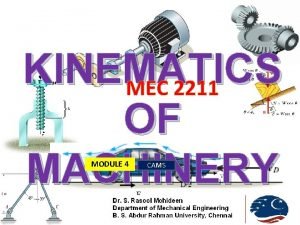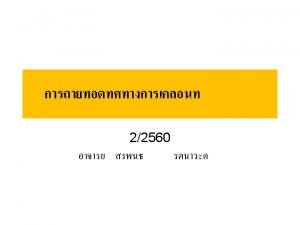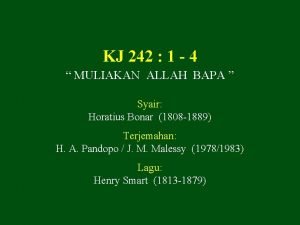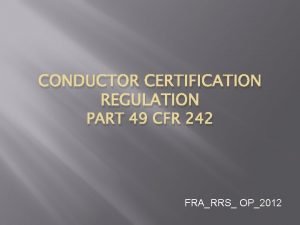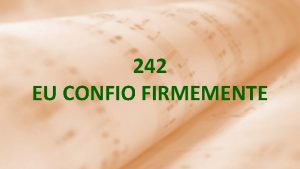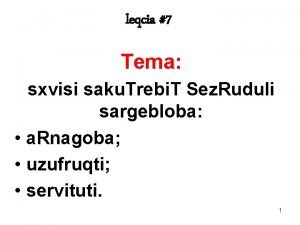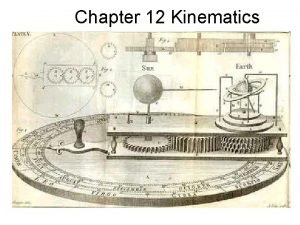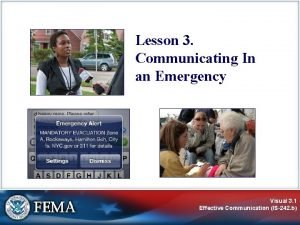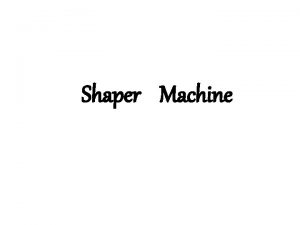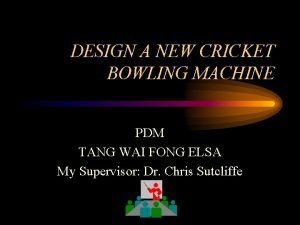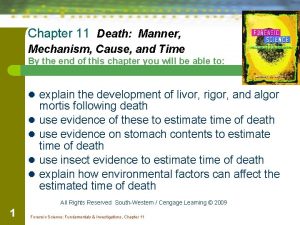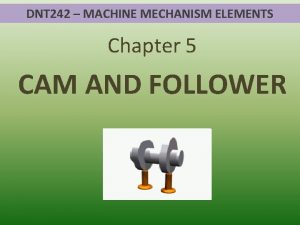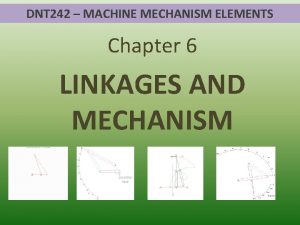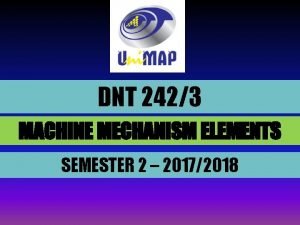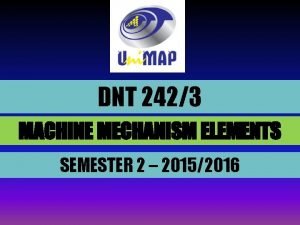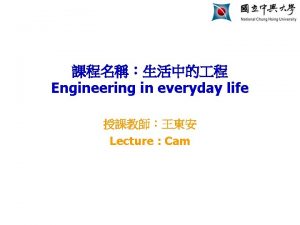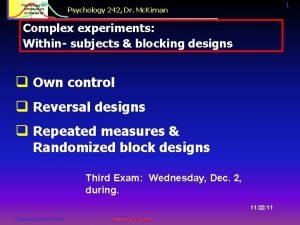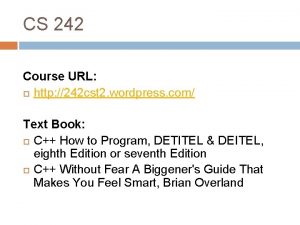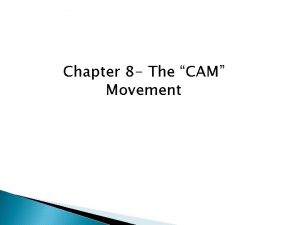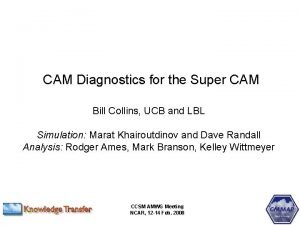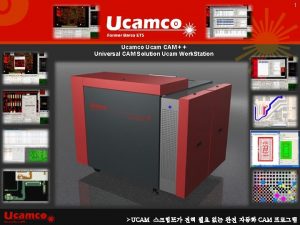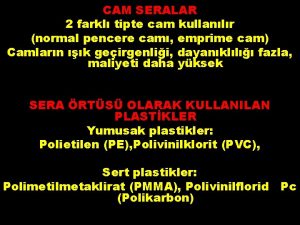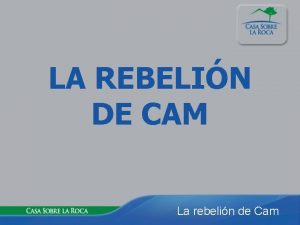DNT 242 MACHINE MECHANISM ELEMENTS Chapter 5 CAM







































- Slides: 39

DNT 242 – MACHINE MECHANISM ELEMENTS Chapter 5 CAM AND FOLLOWER

DNT 242 – MACHINE MECHANISM ELEMENTS v Brief introduction about basic of camshaft and follower. v Discuss the configuration and arrangement of camshaft and follower. v Define base circle, prime circle, pitch curve and other nomenclature. v Calculate velocity and acceleration motion. v Perform design of camshaft and follower base on the movement types.

Chapter 5: CAM AND FOLLOWER INTRODUCTION q A cam is a mechanical element used to drive another element, a follower, through a specified motion by direct contact. q A cam system consists of the cam itself and the follower, which moves through a guide and provides the output motion. q A cam and follower system is a system/mechanism that uses a cam and follower to create a specific motion.

Chapter 5: CAM AND FOLLOWER INTRODUCTION • A cam converts a rotary input motion into either reciprocating or oscillatory output action.

Chapter 5: CAM AND FOLLOWER INTRODUCTION • The cam has a very important function in the operation of many classes of machines, especially those of the automatic type, such as printing presses, shoe machinery, textile machinery, gear-cutting machines, and screw machines.

Chapter 5: CAM AND FOLLOWER Classification of Cam Mechanisms • Cam mechanisms can be classified by: q modes of input/output motion. q the type of the follower. q the arrangement of the follower. q the shape of the cam.

Chapter 5: CAM AND FOLLOWER 1. Modes of input/output motion.

Chapter 5: CAM AND FOLLOWER 1. Modes of input/output motion. Rotating cam – oscillating follower

Chapter 5: CAM AND FOLLOWER 1. Modes of input/output motion. Rotating cam – Translating follower

Chapter 5: CAM AND FOLLOWER 1. Modes of input/output motion. Translating Cam-translating follower

Chapter 5: CAM AND FOLLOWER 2. The type of the follower

Chapter 5: CAM AND FOLLOWER 2. The type of the follower Flat faced follower

Chapter 5: CAM AND FOLLOWER 2. The type of the follower

Chapter 5: CAM AND FOLLOWER 3. The arrangement of the follower

Chapter 5: CAM AND FOLLOWER 4. The shape of the cam

Chapter 5: CAM AND FOLLOWER 4. The shape of the cam

Chapter 5: CAM AND FOLLOWER Cam Nomenclature

Chapter 5: CAM AND FOLLOWER Cam Nomenclature

Chapter 5: CAM AND FOLLOWER Cam Nomenclature

Chapter 5: CAM AND FOLLOWER Design of Cam Systems

Chapter 5: CAM AND FOLLOWER Design of Cam Systems

Chapter 5: CAM AND FOLLOWER Design of Cam Systems • As the cam rotates the follower moves upward and downward. • The upward movement of follower is called rise (Outstroke) • The downward movement is called fall (Returnstroke). • When the follower is not moving upward and downward even when the cam rotates, it is called dwell.

Chapter 5: CAM AND FOLLOWER Design of Cam Systems

Chapter 5: CAM AND FOLLOWER Design of Cam Systems

Chapter 5: CAM AND FOLLOWER Design of Cam Systems

Chapter 5: CAM AND FOLLOWER Design of Cam Systems

Chapter 5: CAM AND FOLLOWER Design of Cam Systems

Chapter 5: CAM AND FOLLOWER Design of Cam Systems

Chapter 5: CAM AND FOLLOWER Design of Cam Systems

Chapter 5: CAM AND FOLLOWER Design of Cam Systems

Chapter 5: CAM AND FOLLOWER Design of Cam Systems

Chapter 5: CAM AND FOLLOWER Design of Cam Systems

Chapter 5: CAM AND FOLLOWER Design of Cam Systems

Chapter 5: CAM AND FOLLOWER Design of Cam Systems

Chapter 5: CAM AND FOLLOWER EXAMPLE

Chapter 5: CAM AND FOLLOWER EXAMPLE

PREVIOUS YEAR FINAL EXAM A cam that is designed for Simple Harmonic Motion drives a flat-faced follower. The follower lift for 35 mm; out stroke with SHM (Simple Harmonic Motion) for 900 cam rotation; dwell for 450 cam rotation; return stroke with SHM (Simple Harmonic Motion) for 1200 cam rotation; dwell for the remaining period. Given: base circle radius = 45 mm. Plot the graphs of displacement for the follower. [Plotkan graf sesaran bagi pengikut. ] Sketch the cam profile. [Lakarkan profil sesondol. ] (6 Marks / Markah)

THANK YOU

ASSIGNMENT #2 1. Briefly explain about the gears -Types of gears - Application of each gears - Figure / sketching of the gears 2. Briefly explain about the belt / chain -Types of belt / chain - Application of each belt / chain - Figure / sketching of belt / chain # Handwriting # Using your own words # Submit on before 3 March 2017
 Dnt machine
Dnt machine Cam cam. cc
Cam cam. cc Cam error
Cam error Classification of cam and follower
Classification of cam and follower Chat sexcam
Chat sexcam Dnt frivillig arbeid
Dnt frivillig arbeid 1st angle and 3rd angle
1st angle and 3rd angle Dnt travsport
Dnt travsport Dnt computer
Dnt computer Slidetodoc.com
Slidetodoc.com Cam mechanism toy
Cam mechanism toy Kj242
Kj242 Gezang 239
Gezang 239 49 cfr part 242
49 cfr part 242 Que eterna gloria vou no ceu
Que eterna gloria vou no ceu He 242
He 242 Csc 242
Csc 242 Ac network theorems
Ac network theorems Algol typing discipline
Algol typing discipline Vip room standard life
Vip room standard life 242 muxli
242 muxli Step ap 242
Step ap 242 Et 242
Et 242 Schema 242
Schema 242 Hibbeler
Hibbeler I^242
I^242 Is-242.b
Is-242.b Et 242
Et 242 The is a reciprocating member of the shaper
The is a reciprocating member of the shaper Cricket bowling machine mechanism
Cricket bowling machine mechanism Finite state machine vending machine example
Finite state machine vending machine example Mealy or moore machine
Mealy or moore machine Moore machine
Moore machine Chapter 10 energy, work and simple machines answer key
Chapter 10 energy, work and simple machines answer key Machine elements in mechanical design 5th edition
Machine elements in mechanical design 5th edition Characteristics of good instruction format
Characteristics of good instruction format The drawing source
The drawing source Machine elements in mechanical design
Machine elements in mechanical design Chapter 11 death meaning manner mechanism
Chapter 11 death meaning manner mechanism Technical elements of drama
Technical elements of drama

